9 /10 1 Votes
93% Metacritic Directed by Damien Chazelle Music by Justin Hurwitz Director Damien Chazelle | 8.4/10 IMDb 93% Rotten Tomatoes Written by Damien Chazelle Cinematography Linus Sandgren Box office 396.4 million USD | |||||||||||||||||||||||||||||||||
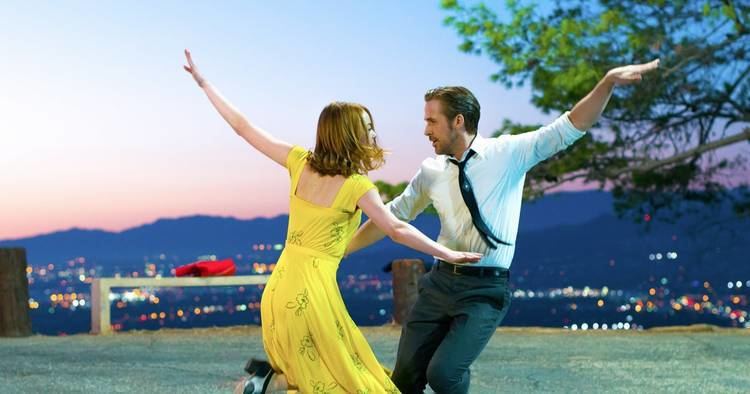 | ||||||||||||||||||||||||||||||||||
Produced by Fred Berger
Jordan Horowitz
Gary Gilbert
Marc Platt Starring Ryan Gosling
Emma Stone
John Legend
Rosemarie DeWitt Initial release 9 November 2016 (Philippines) Cast Ryan Gosling, Emma Stone, John Legend, Rosemarie DeWitt, Sonoya Mizuno Profiles | ||||||||||||||||||||||||||||||||||
La la land 2016 movie all new sing along version
La La Land is a 2016 American musical film written and directed by Damien Chazelle, and starring Ryan Gosling and Emma Stone as a musician and an aspiring actress who meet and fall in love in Los Angeles. The film's title refers both to the city of Los Angeles and to the idiom for being out of touch with reality.
Contents
- La la land 2016 movie all new sing along version
- La la land 2016 movie official trailer dreamers
- Plot
- Pre production
- Casting
- Filming
- Release
- Box office
- Critical response
- Accolades
- Songs
- References

Chazelle wrote the screenplay in 2010 but did not find a studio willing to finance the production without changes to his design. Following the success of his 2014 film Whiplash, the project was picked up by Summit Entertainment. La La Land premiered at the Venice Film Festival on August 31, 2016, and was released in the United States on December 9, 2016. It has grossed $405 million worldwide on a production budget of $30 million.

La La Land received critical acclaim and was regarded as one of the best films of 2016. Critics praised Chazelle's screenplay and direction, Gosling and Stone's performances, Justin Hurwitz's score and the film's musical numbers. It won in every category it was nominated for at the 74th Golden Globe Awards, with a record-breaking seven wins, and received 11 nominations at the 70th British Academy Film Awards, winning five. It received 14 nominations at the 89th Academy Awards, tying the record for most nominations with Titanic (1997) and All About Eve (1950), and won the awards for Best Director, Best Actress (Stone), Best Cinematography, Best Original Score, Best Original Song ("City of Stars") and Best Production Design but lost Best Picture to Moonlight.
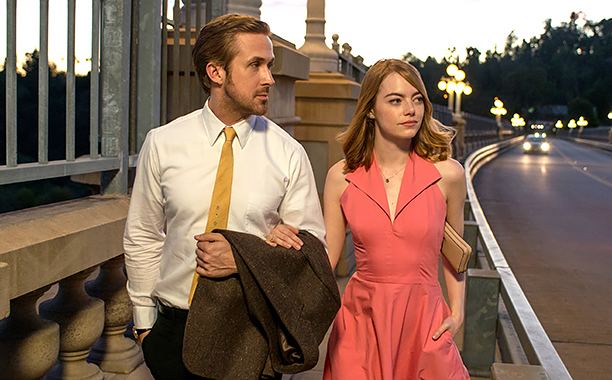
La la land 2016 movie official trailer dreamers
Plot
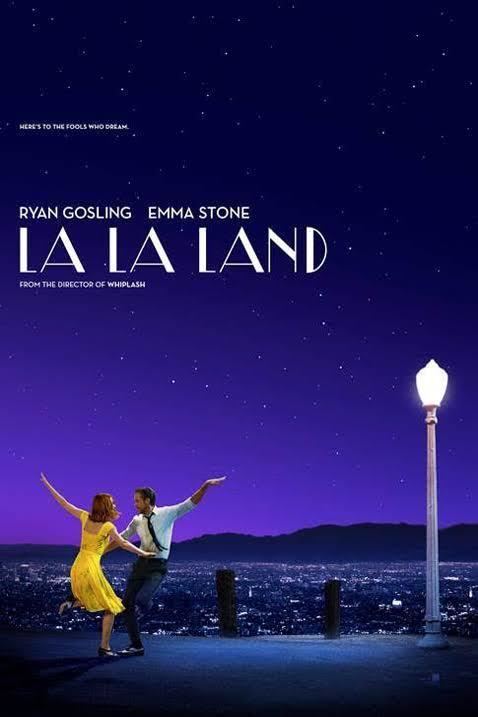
Stuck in traffic on a Los Angeles highway ("Another Day of Sun"), Mia, an aspiring actress, has a moment of road rage with Sebastian, a struggling jazz pianist. Her subsequent audition goes poorly. That night, Mia's roommates take her to a lavish party in the Hollywood Hills ("Someone in the Crowd"). She walks home after her car is towed.
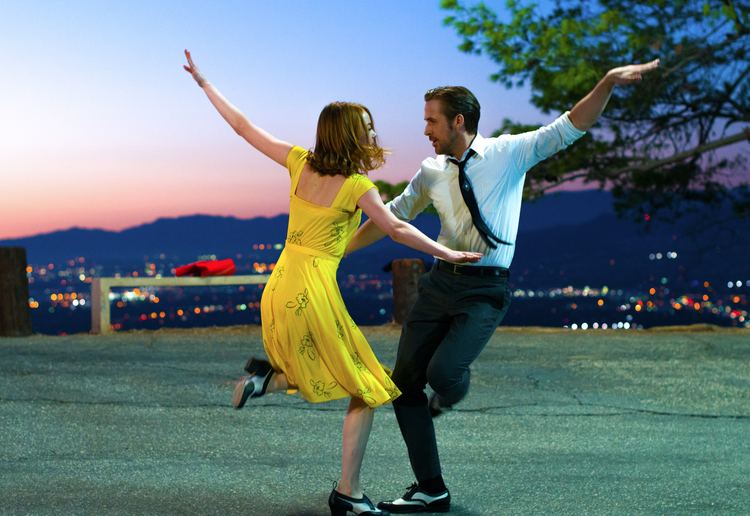
During a gig at a restaurant, Sebastian slips into a passionate jazz improvisation despite warnings from the owner to stick to the setlist. Mia overhears the music as she passes by ("Mia and Sebastian's Theme"). Moved, she enters the restaurant, but Sebastian is fired. As he storms out, Mia attempts to compliment him, but he brushes her off.
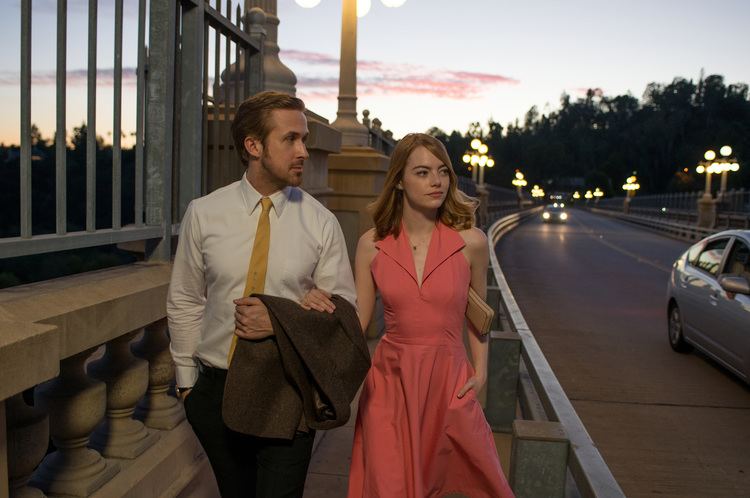
Months later, Mia runs into Sebastian at a party where he plays in a 1980s pop cover band; she teases him by requesting "I Ran (So Far Away)", a song he considers an insult for "a serious musician". After the gig, the two walk to their cars, lamenting each other's company despite the chemistry between them ("A Lovely Night").
Mia shows Sebastian around the movie lot where she works as a barista, explaining her passion for acting. Sebastian takes Mia to a jazz club, describing his passion for jazz and desire to open his own club. They warm to each other ("City of Stars"). Sebastian invites Mia to a screening of Rebel Without a Cause; Mia accepts, forgetting a commitment with her current boyfriend. Bored during that date, she runs to the theatre, finding Sebastian as the film begins. The two conclude their evening with a romantic dance at the Griffith Observatory ("Planetarium").
After more failed auditions, Mia decides, at Sebastian's suggestion, to write a one-woman play. Sebastian begins to perform regularly at a jazz club ("Summer Montage"), and the two move in together. Sebastian's former classmate Keith invites him to be the keyboardist in his fusion jazz band, with a steady income. Dismayed by the band's pop style, Sebastian signs after overhearing Mia trying to convince her mother that Sebastian is working on his career. Mia attends one of their concerts ("Start a Fire") but is disturbed, knowing Sebastian does not enjoy his band's music.
During the band's first tour, Mia and Sebastian get into an argument; she accuses him of abandoning his dreams, while he claims she liked him more when he was unsuccessful. Mia leaves. Sebastian misses Mia's play due to a photo shoot he had forgotten. The play is a disaster; few people attend, and Mia overhears dismissive comments. Despondent, she moves back home to Boulder City, Nevada.
Sebastian receives a call from a casting director who attended Mia's play, inviting her to a film audition. Sebastian drives to Boulder City and persuades Mia to attend. The casting directors ask Mia to tell a story; she sings about her aunt who inspired her to pursue acting ("Audition/The Fools Who Dream"). Sebastian encourages her to devote herself to the opportunity. They profess they will always love each other but are uncertain of their future.
Five years later, Mia is a famous actress and happily married to another man, with whom she has a daughter. One night, the couple stumbles upon a jazz bar. Noticing the "Seb's" logo she had once designed, Mia realizes Sebastian has opened his club, and they spot each other. He plays their love theme and the two imagine what might have been had their relationship worked perfectly ("Epilogue"). Before Mia departs with her husband, she shares a smile with Sebastian.
Pre-production
As a drummer, Damien Chazelle has a predilection for musical films. He wrote the screenplay for La La Land in 2010, when the film industry seemed out of reach for him. His idea was "to take the old musical but ground it in real life where things don't always exactly work out," and to salute creative people who move to Los Angeles to chase their dreams. He conceived the film when he was a student at Harvard University with his classmate, Justin Hurwitz. The two explored the concept in their senior thesis through a low-budget musical about a Boston jazz musician, Guy and Madeline on a Park Bench. Chazelle was moved by the tradition of 1920s city symphony films, such as Manhatta (1921) and Man With a Movie Camera (1929), that paid tribute to cities. After graduating, both moved to Los Angeles in 2010 and continued writing the script, but made a few modifications, such as altering the location to Los Angeles instead of Boston.
L.A., even more so than any other American city, obscures, sometimes neglects, its own history. But that can also be its own magical thing, because it's a city that reveals itself bit by bit, like an onion, if you take the time to explore it.
Rather than trying to match L.A. to the charms of Paris or San Francisco, he focused on the qualities that make the city distinctive: the traffic, the sprawl, and the skies. The style and tone of the film were inspired by Jacques Demy's The Umbrellas of Cherbourg and The Young Girls of Rochefort, especially the latter, which was more dance and jazz-oriented. The film also makes visual allusions to Hollywood classics such as Broadway Melody of 1940, Singin' in the Rain, and The Band Wagon. It shares some character development and themes with Chazelle's previous musical work, Whiplash; Chazelle said that "they're both about the struggle of being an artist and reconciling your dreams with the need to be human. La La Land is just much less angry about it." He said that both films reflect his own experiences as a filmmaker working his way up the Hollywood ladder. La La Land in particular is inspired by his experience of moving from the East Coast with preconceived notions of what L.A. would be like, "that it was all just strip malls and freeways."
Chazelle was unable to produce the film for years as no studio was willing to finance an original contemporary musical, with no familiar songs. It was also a jazz musical, which The Hollywood Reporter called an "extinct genre". He believed that since he and Hurwitz were unknown at that time, it might have made financiers dubious about the project's potential. Chazelle found producers through friends who introduced him to Fred Berger and Jordan Horowitz. With the two producers on board, the script went to Focus Features at a budget of around $1 million. The studio demanded alterations: the male lead was asked to be changed from a jazz pianist to a rock musician, the complicated opening number had to be altered, and the story's bittersweet ending needed to be dropped. Chazelle scrapped the project and moved on.
Chazelle later wrote Whiplash, which was an easier concept to sell and a less risky investment. After Whiplash was well received by critics upon its premiere at the 2014 Sundance Film Festival in January, Chazelle continued his efforts to bring La La Land to the big screen. A year later, when Whiplash earned five Oscar nominations at the 87th Academy Awards including Best Picture, and grossed nearly $50 million worldwide off a $3.3 million production budget, Chazelle and his project began to attract attention from studios.
Five years after Chazelle wrote the script, Summit Entertainment and Black Label Media, along with producer Marc Platt, agreed to invest in La La Land and distribute it. They had been impressed by the critical and commercial success of Whiplash. Lionsgate's Patrick Wachsberger, who had previously worked on the Step Up franchise, pushed Chazelle to increase the film's budget since he felt high-quality musicals could not be made cheaply.
Casting
Initially, Miles Teller and Emma Watson were both set to star in the leads. Watson dropped out over a commitment to the 2017 adaptation of Beauty and the Beast, while Teller departed via long contract negotiations. Chazelle decided to make his characters somewhat older, with experience in struggling to make their dreams, rather than younger newcomers just arriving in Los Angeles.
Emma Stone plays Mia, a struggling actress working as a barista at a coffee shop on the Warner Bros. lot in Los Angeles, who serves lattes in between auditions. Stone has loved musicals since she saw Les Misérables when she was 8 years old, saying that "bursting into song has always been a real dream of mine", and that her favorite film is the 1931 Charlie Chaplin romantic comedy City Lights. She studied pom dancing as a child, with a year of ballet. She moved to Hollywood with her mother at the age of 15 to pursue a career, and struggled constantly to get an audition during her first year. When she did, she was often turned away after singing or saying just one line. Stone drew from her own experiences for her character of Mia, and some were added into the film.
She met Chazelle in 2014 while she was making her Broadway debut in Cabaret. Chazelle and Hurwitz saw her perform on a night when the actress had a cold. She met with Chazelle at Brooklyn Diner in New York City, where the director outlined his vision for the planned film. Stone gained confidence from performing in Cabaret to handle the demands of the film. In preparation for her role, Stone watched some of the musical movies that inspired Chazelle, including The Umbrellas of Cherbourg and Fred Astaire and Ginger Rogers collaborations. Stone accepted the offer because Chazelle was so passionate about the project.
Ryan Gosling plays Sebastian, a jazz pianist who makes a living by playing cocktail party gigs in dingy bars, and has dreams of opening his own club. Like Stone, Gosling drew from his own experiences as an aspiring artist. One incident was used for Mia. Gosling was performing a crying scene in an audition and the casting director took a phone call during it, talking about her lunch plans while he was emoting. Chazelle met with Gosling at a bar near the latter's home in Hollywood Hills, when Gosling was about to begin filming for The Big Short.
Chazelle cast the two immediately after Summit bought the film. He said the two "feel like the closest thing that we have right now to an old Hollywood couple," akin to Spencer Tracy and Katharine Hepburn, Fred Astaire and Ginger Rogers, and Myrna Loy and William Powell. The film marked the third collaboration between Gosling and Stone, following Crazy, Stupid, Love (2011) and Gangster Squad (2013). Chazelle asked the two about their audition disasters when they were both trying to make it. Both learned how to sing and dance for the film's six original tunes.
The rest of the cast – J. K. Simmons, Sonoya Mizuno, Jessica Rothe, Callie Hernandez, Finn Wittrock, Rosemarie DeWitt, John Legend, Jason Fuchs, Meagen Fay – were announced between July and August 2015. Legend plays Keith, a successful mainstream jazz performer and the leader of the band "The Messengers", which Sebastian joins.
The film was choreographed by Mandy Moore. Rehearsals took place at a production office in Atwater Village over the span of three to four months, beginning in May 2015. Gosling practiced piano in one room, Stone worked with Moore in another, and costume designer Mary Zophres had her own corner of the complex. Moore emphasised emotion rather than technique, which Stone said was key when they filmed the Prius scene. To help his cast and crew get their creative mode flowing, Chazelle held screenings on the soundstages every Friday night of classical films that had inspired him for the film, including The Umbrellas of Cherbourg, Singin' in the Rain, Top Hat, and Boogie Nights.
Filming
From the beginning, Chazelle wanted the film's musical numbers to be filmed "head to toe" and performed in a single take, like those of the 1930s works of Ginger Rogers and Fred Astaire. He also wanted the film to emulate the widescreen, CinemaScope look of 1950s musicals such as It's Always Fair Weather. Consequently, the film was shot on film (not digitally) with Panavision equipment in a widescreen format, but not true CinemaScope as that technology is no longer available.
Chazelle wanted Los Angeles to be the primary setting for his film, commenting that "there is something very poetic about the city I think, about a city that is built by people with these unrealistic dreams and people who kind of just put it all on the line for that." Principal photography on the film officially began in the city on August 10, 2015, and filming took place in more than 60 L.A. locations, including the Angels Flight trolley in downtown, houses in the Hollywood Hills, Angels Flight, the Colorado Street Bridge, South Pasadena, the Warner Bros. studio lot, the Grand Central Market, Hermosa Beach's Lighthouse Cafe, Chateau Marmont Hotel, and the Watts Towers, with many scenes shot in one take. It took 40 days to complete shooting, finishing in mid-September 2015.
The opening pre-credits sequence was the first to be shot, and was filmed on a closed-off portion of the carpool ramp of the Los Angeles highway, connecting the 105 freeway to the 110, leading to Downtown Los Angeles. It was filmed in a span of two days, and required over 100 dancers. For this particular scene, Chazelle wanted to give a sense of how vast the city is. The scene was originally planned for a stretch of ground-level highway, until Chazelle decided to shoot it in the 105–110 interchange, which arcs 100 feet in the air. Production designer David Wasco said, "I thought somebody was going to fall off and get killed." Not every portion of the highway was blocked. Chazelle compared the scene to the yellow brick road leading to the Emerald City in The Wizard of Oz (1939).
Chazelle scouted for "old L.A." locations that were in ruins, or were perhaps razed. One such example was the use of the Angels Flight trolley, built in 1901. The funicular had been closed in 2013 after a derailment. Attempts were made to repair and re-open the railway, but to no avail. However, the production team was able to secure permission to use it for a day. Chazelle and his crew then arranged to have it run for shooting. Mia works at a coffee shop on the Warner Bros. studio lot; Chazelle considered studio lots to be "monuments" of Hollywood. Production designer Wasco created numerous fake old film posters. Chazelle occasionally created names for them, deciding to use the title of his first feature, Guy and Madeline on a Park Bench (2009), for one poster, which reimagines it as a 1930s musical.
The six-minute long Prius scene had to be completed during the brief "magic hour" moment at sunset. It took eight takes and two days to shoot it. When Gosling and Stone finally nailed it, "everybody just exploded," Stone said. Since Gosling and Stone were not Broadway performers, the two made a number of mistakes, especially during long uninterrupted single-take musical numbers. However, Chazelle was very sympathetic towards them, understanding their lack of experience and not minding their errors. While shooting Sebastian and Mia's first dance together, Stone stumbled over the back of a bench, but picked right up and kept on going with the scene.
Chazelle spent nearly a year editing the film with editor Tom Cross, as the two were primarily concerned with getting the tone just right.
The songs and score for La La Land were composed and orchestrated by Justin Hurwitz, Chazelle's Harvard University classmate, who also worked on his two prior films. The lyrics were written by Pasek and Paul, except for "Start a Fire", which was written by John Stephens, Hurwitz, Marius De Vries and Angelique Cinelu.
A soundtrack album was released on December 9, 2016, by Interscope Records, featuring selections from Hurwitz's score and songs performed by the cast.
Release
La La Land had its world premiere as the Venice Film Festival's opening night film on August 31, 2016. The film also screened at the Telluride Film Festival, the Toronto International Film Festival, beginning September 12, 2016, the BFI London Film Festival, the Middleburg Film Festival in late October 2016, the Virginia Film Festival, held at the University of Virginia on November 6, 2016, and the AFI Fest on November 15, 2016.
The film was initially set for a July 15, 2016, release; however, in March 2016, it was announced the film would be given a limited release starting December 2, 2016, before expanding on December 16. Chazelle stated that the change was because he felt that the release date was not right for the context of the film, and because he wanted to have a slow rollout beginning with the early fall film festivals. The film was later pushed back a week to December 9, with the wide release still being planned for December 16. Lionsgate opened the film in five locations on December 9, and expanded it to about 200 theaters on December 16, before going nationwide on December 25. The film went fully wide on January 6, 2017, with a release into select IMAX theaters a week later.
La La Land was released in the United Kingdom on January 12, 2017. The film was released in the Netherlands on December 22, 2016, and in Australia on December 26, with the rest of the territories planned for a release from mid-January 2017.
Box office
As of March 7, 2017, La La Land has grossed $146.2 million in the United States and Canada and $251.1 million in other territories for a worldwide total of $405 million against a production budget of $30 million.
La La Land began its theatrical release with a limited release in five theaters in Los Angeles and New York City on December 9. It made $881,107 in its opening weekend, giving the film a per-theater average of $176,221, the best average of the year. In its second week of limited release, the film expanded to 200 theaters and grossed $4.1 million, finishing 7th at the box office. It was an increase of 366% from the previous week and good for a per-theater of $20,510. The following week, the film had its wide expansion to 734 theaters, grossing $5.8 million for the weekend (including $4 million on Christmas Day and $9.2 million over the four days), and finishing 8th at the box office. On January 6, 2017, the weekend of the Golden Globes, the film expanded to 1,515 theaters and grossed $10 million over the weekend, finishing 5th at the box office. In its 6th week of release, the film grossed $14.5 million (a total of $16.9 million over the four-day MLK weekend), finishing 2nd at the box office behind Hidden Figures. After receiving its 14 Oscar nominations, the film expanded to 3,136 theaters on January 27, 2017 (an increase of 1,271 from the week before) and grossed $12.1 million (up 43% from its previous week's $8.4 million). During the weekend of February 24–26 (the weekend of the Academy Awards) the film grossed $4.6 million, exactly the same amount it grossed the previous weekend. The next week, following its six Oscar wins, the film grossed $3 million.
Critical response
La La Land was met with critical acclaim upon its release, with critics praising its screenplay, direction, performances, musical score and musical numbers. The review aggregation website Rotten Tomatoes gives the film an approval rating of 93% based on 332 reviews, with an average rating of 8.6/10. The site's critical consensus reads, "La La Land breathes new life into a bygone genre with thrillingly assured direction, powerful performances, and an irresistible excess of heart." On Metacritic, which assigns a normalized rating based on reviews, the film has a score of 93 out of 100, based on 53 critics, indicating "universal acclaim". It was the sixth-highest scoring film released in 2016.
Peter Travers of Rolling Stone gave La La Land four stars out of four, describing it as "a hot miracle" and complimenting its musical numbers, particularly the opening scene. He went on to name it his favorite movie of the year. Michael Phillips of the Chicago Tribune similarly lauded the opening sequence, in addition to highlighting Stone's performance, stating "she's reason enough to see La La Land." Despite being less enthusiastic about Gosling's dancing and the film's middle section, Phillips nevertheless gave the film four out of four stars, declaring it "the year's most seriously pleasurable entertainment".
A. O. Scott of the New York Times praised the film, stating that it "succeeds both as a fizzy fantasy and a hard-headed fable, a romantic comedy and a showbiz melodrama, a work of sublime artifice and touching authenticity". Peter Bradshaw of The Guardian awarded the film five out of five stars, describing it as "a sun-drenched musical masterpiece." Tom Charity of Sight & Sound stated, "Chazelle has crafted that rare thing, a genuinely romantic comedy, and as well, a rhapsody in blue, red, yellow and green." Diana Dabrowska of Cinema Scope wrote, "La La Land may look like the world that we dream about, but it also understands the cruelty that can come out of (or undermine) those dreams; it's shot in CinemaScope, and yet it's still an intimate masterpiece."
Writing for The Boston Globe in December 2016, Ty Burr summarized the effectiveness of the film to relate to audiences stating: "...the movie traffics in the bittersweet happiness of treasuring things that are vanishing, like the unrealized future imagined in the climactic dance number, or those inky, star-filled dance floors that go on forever in old movies, or Hollywood musicals themselves. Or jazz: Sebastian has an early moment at a nightclub where he passionately sticks up for the music he loves. “It’s dying on the vine,” he says. “And the world says ‘Let it die. It had its time.’ Well, not on my watch.” In that scene, he speaks for the director. By the end of “La La Land,” he’s speaking for all of us."
The film has been criticized for its treatment of race and jazz. Kelly Lawler of USA Today noted that Gosling's character has been referred to as a "white savior" by some critics, due to "his quest (and eventual success) to save the traditionally black musical genre from extinction, seemingly the only person who can accomplish such a goal." The sentiment was also expressed by Ruby Lott-Lavigna of Wired, Anna Silman of New York and Ira Madison III of MTV News. Rex Reed of the New York Observer also takes aim at the film's intention to emulate the MGM musical classics, noting that "the old-fashioned screenplay, by the ambitious writer-director Damien Chazelle, reeks of mothballs", and that "the movie sags badly in the middle, like a worn-out mattress that needs new springs".
Accolades
At the 89th Academy Awards, La La Land received a leading six awards, including Best Director, Best Actress (for Stone), Best Cinematography, Best Original Score, Best Original Song ("City of Stars") and Best Production Design. The film received a total of 14 nominations, tying records for most nominations by a single film with All About Eve (1950) and Titanic (1997). Its other nominations included Best Picture, Best Actor (for Gosling), Best Original Screenplay, Best Film Editing, Best Costume Design, a second nomination for Best Original Song ("Audition"), Best Sound Editing and Best Sound Mixing. During the ceremony, Faye Dunaway announced that La La Land had won Best Picture, reading it from the incorrect card Warren Beatty held, which was actually for the Best Actress award that Stone had just won. It took the show's crew more than two minutes and nearly three whole speeches to rectify the mistake; the actual winner was Moonlight.
At the 74th Golden Globe Awards, La La Land received a leading seven nominations. The film won in all seven categories for which it was nominated, setting a record for most Golden Globes won by a single film, namely Best Motion Picture – Musical or Comedy, Best Director, Best Actor – Comedy or Musical for Gosling, Best Actress – Comedy or Musical for Stone, Best Screenplay, Best Original Score and Best Original Song ("City of Stars").
La La Land received eleven nominations at the 70th British Academy Film Awards, more than any other film of 2016. The film won in the categories of Best Film, Best Director, Best Actress in a Leading Role for Stone, Best Cinematography and Best Film Music.
Songs
1Another Day of SunMarius de Vries - Angela Parrish - Sam Stone - 3:48
2Someone In The CrowdEmma Stone - Sonoya Mizuno - Callie Hernandez - 4:20
3Mia & Sebastian’s ThemeJustin Hurwitz1:38
